The LaCie Mobile SSD works great, but highlights its form over pushing the envelope of function
posted Monday, March 11, 2019 at 3:20 PM EDT
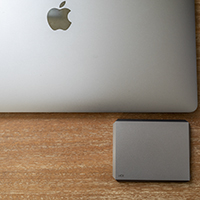
The USB-C format I think is finally coming into its own. I remember not too long ago that those of us with a MacBook Pro that only had USB-C ports were lamenting the lack of support for the format. But now, in 2019? There is a wholly new problem: the paradox of choice.
Where we once only had maybe one or two options for external storage with native USB-C connectivity, we now have a huge number. With SSDs alone, I've now personally tested four different drives from three different manufacturers that have been released in the last eight months. This review, which is that fourth drive and the second from one manufacturer, is one that no doubt will confuse a prospective customer. The LaCie Mobile SSD isn't by any means a bad product (quite the opposite actually), but when compared against the LaCie Portable SSD, which is indeed a completely separate product, you can start to see what I mean.
But I'll loop back around to the confusing parts at the end. Let's first just talk about the Mobile SSD.
Bringing back a design that feels very much like it fits in with their D2 and 6Big line of HDD products, the Mobile SSD features a solid aluminum exterior with hard "diamond cut design" edges, giving it a kind of futuristic look. I like the design more when contrasted with the other products LaCie has released in the past, like its Rugged line, but a bit less than the jet black with red accents look that the LaCie Portable SSD brought, which was wholly new from the digital storage company. In a way, it feels like a slight regression in design, but it does serve a purpose.
The diamond-cut design and wholly aluminum casing actually makes the Mobile SSD more tolerant of drops than its counterpart. It can fall from a height of 3 meters, while the Portable SSD can only take a drop of 2 meters. So it's not a lot, but it is something.
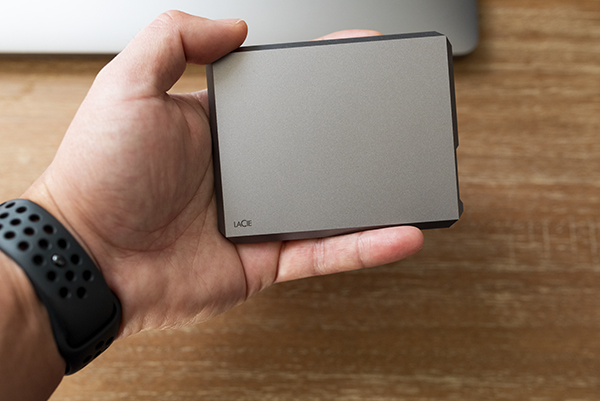
LaCie also says that the design and color of the Mobile SSD were made to match that of the Apple ecosystem, and I will say that the grey aluminum on the Mobile SSD does go with my MacBook Pro a lot more "seamlessly" than the other drives I own. It isn't perfect though, as the LaCie drive is just slightly darker than my laptop, or at least the way the metal looks appears to be just a hair darker. It's close though, and the only one of the four SSDs I've tested that actually looks like it could be an Apple product.
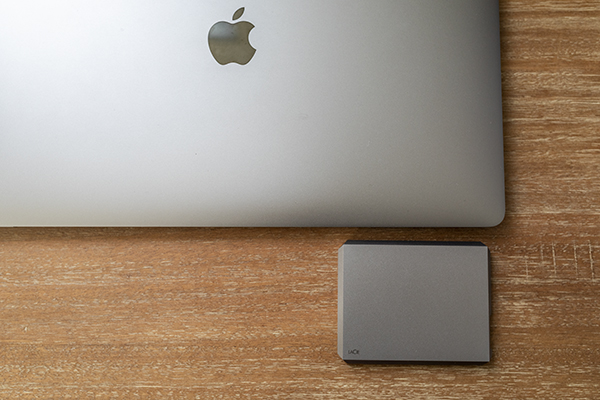
From the outside, other than the design, there isn't much else to see. There is a single USB-C port on one short side of the SSD, and next to that a small indicator light. The simplicity is likely a design choice, in addition to there not being a heck of a lot else to put on a small drive like this.
Performance-wise, LaCie rates the Mobile SSD to reach transfer speeds of 540 MB/s. I tested the performance with both a "USB-C to USB-C" cable as well as a "USB-A to USB-C" cable, as it ships with both (which is great, since this drive can be used on either an older machine or a newer one).
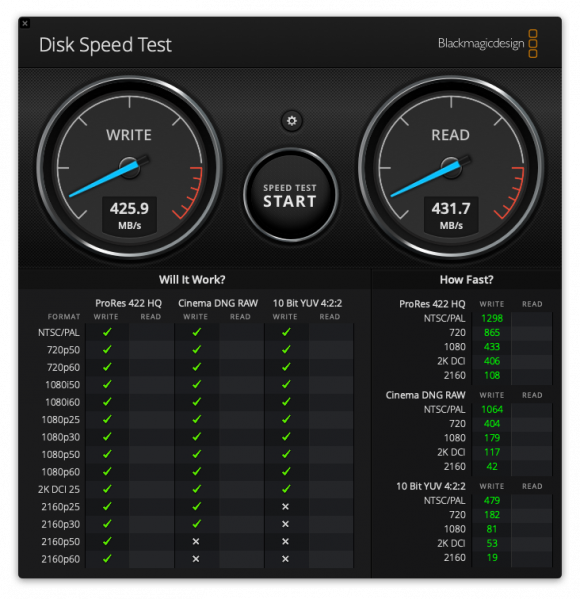
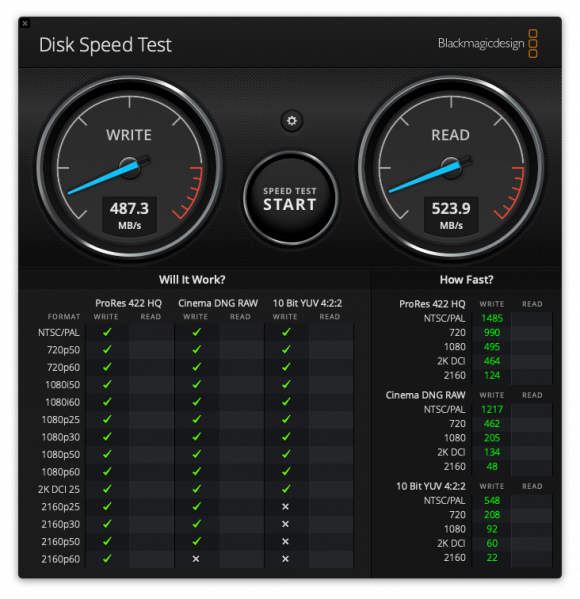
As you can see, the performance is pretty great with either cable, but the "USB-C to USB-C" connection is clearly the best way to go. Though it doesn't reach the quoted 540 MB/s, that's pretty common with drives these days. I'm willing to cut manufacturers a little slack here, as there is probably a case where the SSD could reach those speeds but we're just not seeing it. In any case, the performance is solid and allows for extremely fast transfer speeds; it is even fast enough to edit most 4K video directly from the SSD.
This time, I opted not to bother testing this drive with a Thunderbolt 3 cable because though it will "work," this is not a Thunderbolt 3-certified device. Therefore, as this has not been licensed by Intel to work with Thunderbolt 3, you will find significantly hampered performance should you choose to use a Thunderbolt 3 cable. For more on this, please consult my review of the Portable SSD.
So now that we know what it looks like, why it was designed the way it was, and how it performs, I do want to loop back and discuss the possible confusion here.
LaCie now has two SSD products designed to work with USB-C devices. First came the Portable SSD a few months ago, which I praised for its speed and design. Now, with this review, we are looking at the Mobile SSD, which has the same specifications internally as the Portable SSD, but with a totally different exterior.
Portable vs Mobile... you can see why this is confusing. Even while writing this review, I had to keep the Mobile SSD box in front of me so I could continually remind myself which one I was writing about.
The only real difference between the two products is the design, and the design of the Mobile SSD then allows for the drive to survive a drop from a greater height than the Portable SSD.
Well, almost the only difference: there is a major price difference as well. The LaCie Portable SSD (the black and red one) is $419 for 2 TB (and there are lower size options available to for less), while the Mobile SSD is going to cost $500. That's an $80 difference for one meter of drop resistance, and a fully grey aluminum body.
One other note: both the Portable and Mobile SSD products come with a month of the full Adobe CC plan, which is all apps.
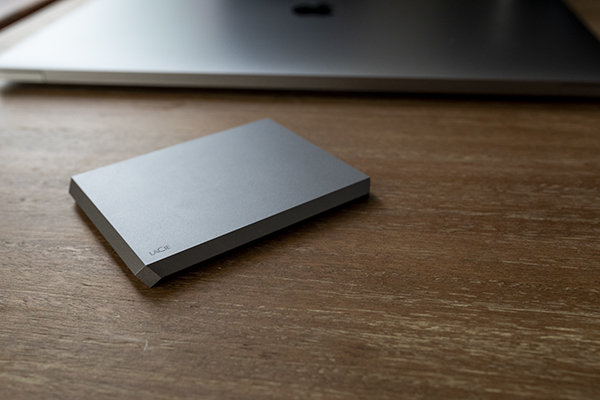
I have to think the design choices here were purely for marketing. Because the Mobile SSD is the color it is, it will appeal to those with MacBook Pros who want their whole workstation to look clean and continuous. But from a pragmatic point of view, the Mobile SSD isn't really the smart buy here. Sure, it's a bit more rugged, but it has basically the same performance as the Portable SSD (actually our testing showed the Mobile SSD to be a bit slower than the older Portable SSD but this is common among devices, and the performance average should be the same on a large sample size). It seems like a tough ask for me to shell out $80 more for what comes down to pretty much just aesthetics. I'm not trying to make light of the additional meter of drop resistance, which is always nice, it's just not as important as I think other SSD features are and in this case, there are no other differentiators between the two products.
I don't mean to harp on this product, because it's actually quite good. In fact, I feel about it pretty much as I did with the LaCie Portable SSD: it's great! But we can't always look at products in a vacuum. We have to be willing to look at them as a member of a market as a whole. Here, that market is a bit clouded.
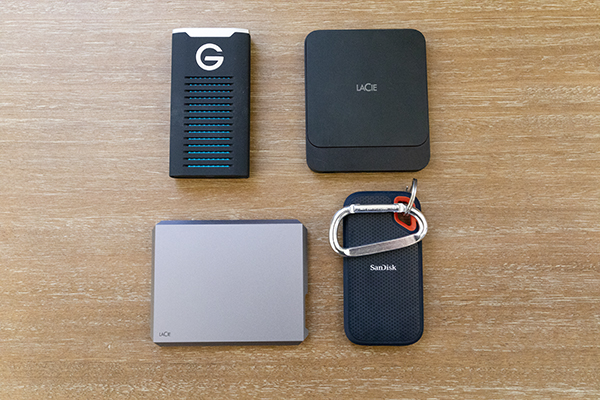
I mentioned at the beginning of this review that we are starting to come up against the paradox of choice. In that scenario, having more options doesn't make me as a consumer happier. I think that right now there may be enough of a physical difference among the two LaCie products to make them both attractive to different audiences, but it's very slight. If we see another mobile SSD with similar performance and capacities, that will definitely be the tipping point. As it is now, you have two very similar choices if you want to buy from LaCie, but those options muddy even further when you look beyond LaCie. SanDisk has a great little portable drive, and so does G-Technology. The differences among these devices are slight, and the more options we throw at this one segment that offers very little in terms of performance upgrades, the less happy I think we all as consumers are going to be.